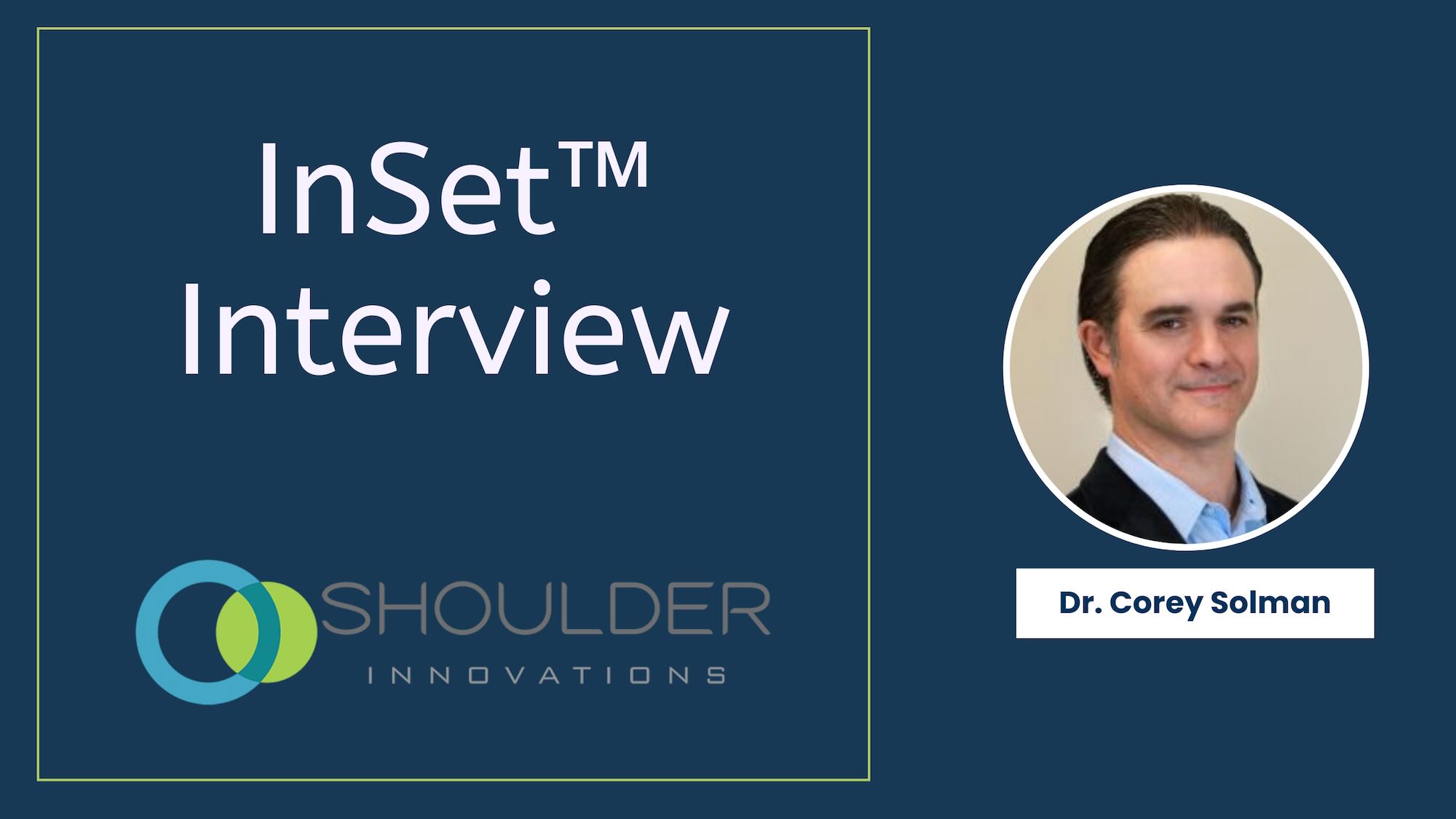We recently had the opportunity to interview Dr. Corey Solman and learn more about his background and experiences using InSet™ Systems from Shoulder Innovations in his practice as an orthopedic surgeon. An edited version of our interview led by David Blue follows.
David Blue
Thank you for joining us today. Would you share your background with us, including how you became involved in healthcare and what attracted you to orthopedics?
Dr. Corey Solman
Absolutely. It’s kind of a funny story – I was, in a way, brainwashed as a child, by my Lebanese aunt who firmly believed I was too smart to pursue a career in anything but medicine. At that point, it was unclear whether this was a good or bad thing, but in retrospect, I truly love what I do. Despite knowing from a young age that I was destined to be a doctor, I didn’t have much exposure to the field growing up. However, everything changed when I experienced an orthopedic injury as a collegiate freshman—I tore my ACL while skiing. This incident piqued my interest in orthopedics as I became fascinated with the anatomy of the knee during my recovery. From that point on, I was wholly focused on orthopedics.
The moment I started medical school, I knew, without a doubt, that orthopedics was my calling, and that’s what ultimately led me to this field.
David Blue
What attracted you to shoulder as a subspecialty?
Dr. Corey Solman
During my residency, I found myself drawn to shoulder anatomy and orthopedics. To be honest, I was contemplating a career either in sports medicine or spine, given the interests of some of my mentors at Tulane. However, my love for sports and athletic background drew me towards sports medicine.
My fascination with the anatomy of the shoulder deepened during residency, and I became enamored with arthroscopy, as it was gaining prominence at the time of my training in the late 90s and early 2000s. This era marked the advent of novel shoulder and arthroscopic techniques. The shoulder was seen as a sort of black box — many found its complexity daunting and steered clear of specializing in it. This complexity, contrastingly, intrigued me. Not many specialized in shoulders, and I found joy in navigating through its intricate anatomy and addressing shoulder conditions, a passion I continue to nurture.
This affinity for the complexity of the shoulder and the desire to treat such conditions have become a significant part of my practice, and I hope to further this expertise in the years to come.
David Blue
Can you share your journey to the InSet™ Shoulder System? What were your initial impressions?
Dr. Corey Solman
I have a friend who was a shoulder representative and distributor for Tornier back in the day, so I’ve gotten to know several members of the Shoulder Innovations team for over 15 years as many of them were previously at Tornier.
As we know, the last two decades have seen numerous iterations and design enhancements for reverse shoulder replacements. Each new version seemed to bring slight improvements over its predecessor. Examining various shoulder designs and considering how we could innovate on existing models is what piqued my interest with InSet™ devices.
Now, I diverged from the conventional onlay glenoid components with total shoulders, leaning towards the complete inlay component with the Arthrosurface implants introduced around the late 2000s. I regularly used these for suitable younger patients until I discovered InSet™ technology, which then became my preference.
More than just the ease of use, the application of the InSet™ technology is much more broad. Fundamental skills are still essential for exposing the shoulder and placing the implants. However, the technology that InSet™ provides does make the placement of these implants considerably more manageable.
We hadn’t had many effective options for patients with glenoid bony deformities until about five to seven years ago. The InSet™ technology facilitates corrections for these deformities, easing the surgical process in such cases.
Additionally, the almost stemless technology for the humeral side, and now the stemless humeral side, meets all my expectations for an anatomic total shoulder replacement. In my view, this is cutting-edge and has been performing well with our patients.
David Blue
For surgeons exploring Shoulder Innovations products, any tips or pieces of advice?
Dr. Corey Solman
Knowing the glenoid bone deformities is crucial. The humerus part of any shoulder replacement is relatively easy to perform but making it even easier and reproducible is a win.
Having a clear understanding of the glenoid’s anatomy and morphology is vital. With this knowledge and an understanding of the InSet™ Glenoid component, a surgeon can approach these cases with a great deal of confidence. Knowing where to place your pin, where and how much to ream, are key to ensuring successful surgery. This enables you to place an easy-to-install implant with the assurance that you’re correcting any deformity and restoring the anatomy as needed to achieve optimal results.
David Blue
Any closing thoughts, Dr. Solman?
Dr. Corey Solman
Indeed, this InSet™ shoulder systems technology that is being offered in both the TSA and RSA is going to continue to transform shoulder arthroplasty. Its ease of placement and the ability to confidently restore anatomy are really strong selling points.
Dr. Corey Solman is an orthopedic surgeon in St. Louis, MO.

